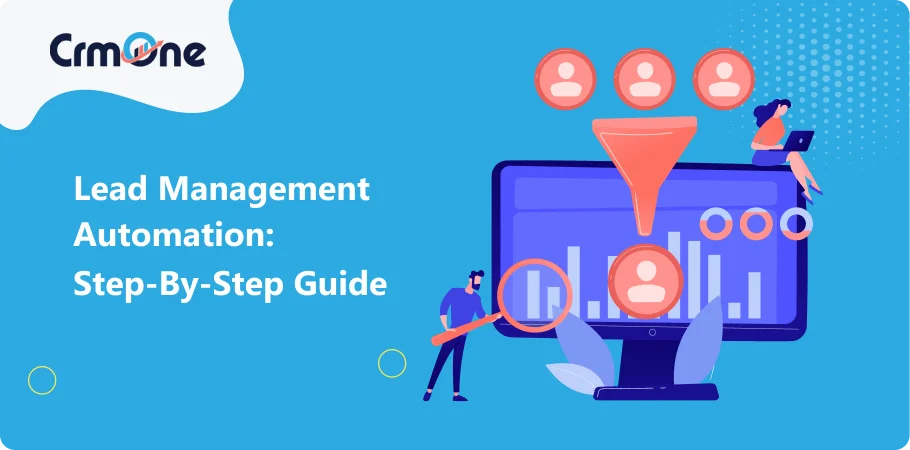In the fast-paced world of sales and marketing, using old methods is not enough to stay ahead. Lead management system helps streamline processes, improve efficiency, and boost conversion tracking.
A crucial aspect is using lead management to manage leads efficiently. This involves engaging with our customers on social media and using lead automation tools to simplify processes. In this guide, we’ll show you how to use lead automation step by step to boost your business in today’s fast-paced market.
What is Lead Management Automation
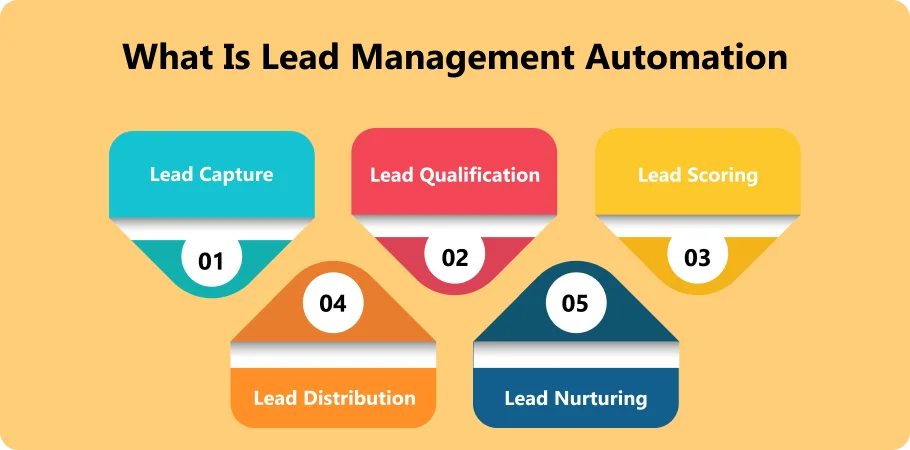
Before we get into the details, let’s understand what lead automation . It uses technology to make capturing, nurturing, and converting leads into customers easier and faster. This uses various tools and strategies to help marketing teams manage and track leads throughout the sales process. By using lead generation automation software, businesses can streamline their lead management processes. This ensures that no new leads are missed.
Lead automation focuses on handling lead data to nurture and convert qualified leads. Marketing automation platforms automate repetitive tasks. They guide potential customers through their customer journey. This not only improves the efficiency of nurturing leads but also contributes to business growth.
Importance of Lead Management Automation
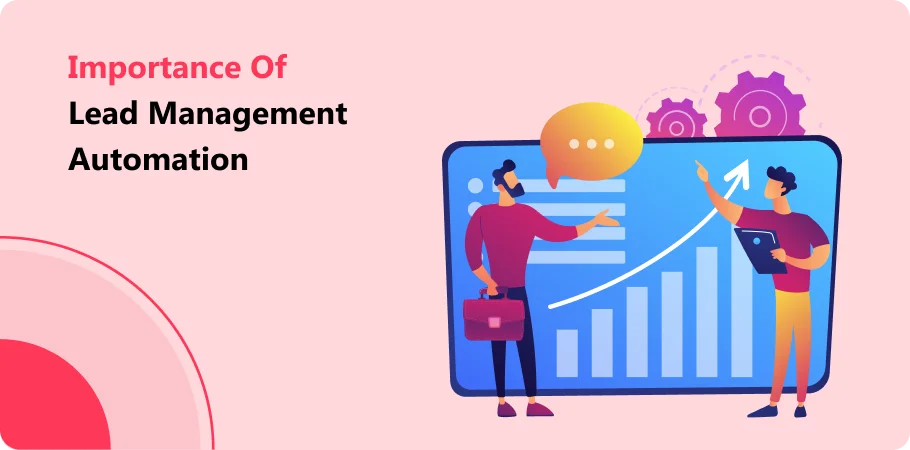
Here are some key reasons why it’s important:
1. Enhanced Efficiency: Automating tasks like lead scoring and follow-up saves time and resources. This allows teams to focus on more important work. This efficiency boosts streamlines operations and enhances productivity.
2. Improved Lead Quality: Lead management boosts lead quality by simplifying processes. It also enables targeted nurturing. This results in more qualified prospects for sales teams.
3. Better Conversion Tracking: Lead automation improves conversion tracking, enhancing visibility and efficiency. This helps them refine strategies and improve conversion rates.
4. Streamlined Communication: Automation ensures smooth communication between marketing and sales teams. It helps in handing off and nurturing leads throughout the sales process.
5. Scalability: As businesses grow, manual lead management processes become unsustainable. Automation enables businesses to handle increasing lead volumes, ensuring scalability without sacrificing effectiveness.
Lead Management Automation: Step-by-Step Guide
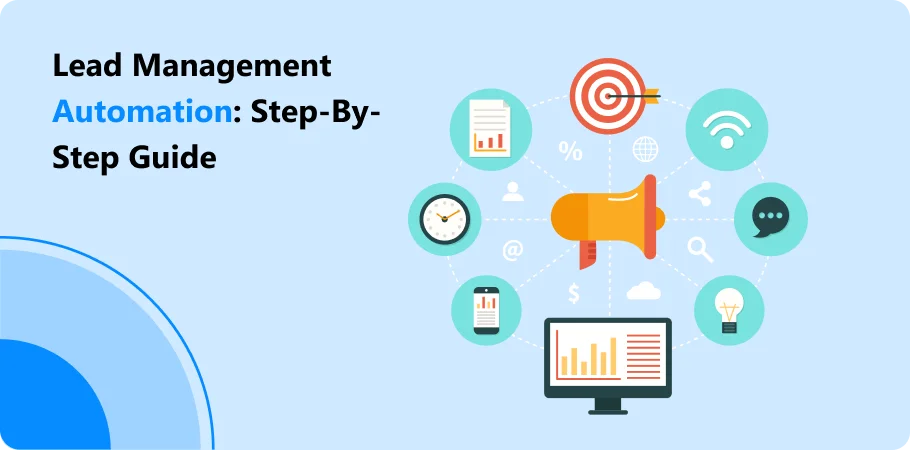
Step 1. Define Your Goals
Start by defining your goals for lead automation. It’s important to know what you want to achieve with this technology. To boost lead generation, improve the sales team’s efficiency, or enhance customer experience, set clear goals. Clear objectives guide your strategy. For instance, to enhance lead generation efforts, rank creating efficient lead generation forms. These forms effectively capture leads. To enhance sales efficiency, automate lead segmentation leads by behavior and interactions. This streamlines the process effectively.
Once your goals are set, align your marketing automation tools and processes to meet these objectives. If capturing more new leads is your goal, invest in tools that enhance your lead generation capabilities. that provide insights into where potential customers come from. Clear goals will help you tailor your automation strategy to focus on the most important areas of your lead generation efforts. This approach will streamline the process and ensure your sales team can manage. That converts qualified leads, contributing to your business growth.
Step 2. Choose the Right Automation Tools
Selecting the right automation tools is crucial for success. Look for tools that can serve as your lead generation tool and help automate lead processes. Consider the tool’s functions, ensuring it can capture, nurture, and convert leads effectively. It’s important to choose scalable tools so they can grow with your business. Check if the tools can integrate with your current systems, like CRM or sales automation software, for seamless operation.
Additionally, check the user-friendliness of the lead automation tools. Tools that are easy to use will save your team time and reduce the learning curve. Think about using social media automation tools to handle and track leads from social platforms. Automate lead generation can help streamline the process, making it easier to capture and nurture leads. Selecting the right tools ensures efficient and effective lead generation, driving business growth.
Step 3. Integrate Marketing and Sales Systems
To manage leads, connect your marketing platforms with your CRM system. This integration ensures that leads flow between sales and marketing teams. When your marketing efforts and sales funnel are connected, both teams can access the same information. This makes it easier to track and manage leads throughout the sales cycle. It also helps align your marketing strategies with sales goals, creating a unified approach to lead management.
Integrating your systems improves email marketing campaigns and other marketing processes. It ensures that all leads captured from different marketing platforms are added to your CRM, where they can be nurtured and tracked. This smooth flow of information helps optimize your marketing strategies and efficiency. your marketing automation platform with your CRM improves teamwork between sales and marketing. This results in better lead management and stronger business outcomes.
Step 4. Develop Lead Scoring Criteria
Work together with your marketing and sales teams to create lead-scoring criteria. This means evaluating lead information like demographics, lead behavior, and engagement levels. By setting these criteria, you can segment leads based on their conversion likelihood. This helps your sales team focus on high-quality leads. it makes your lead-generation strategies more effective.
To gather the necessary lead information, ensure your lead capture methods, like lead forms, collect relevant data. Use lead generation automation to streamline this process. Automating lead generation helps your team gather and assess lead information. Using automated lead generation tools helps you focus on managing leads. This enhances your efforts and boosts conversion rates.
Step 5. Implement Lead Nurturing Workflows
Create automated workflows to support lead nurturing at every stage of the buyer’s journey. This includes personalized email campaigns, targeted content delivery, and automated follow-up sequences. automate lead generation help you automate lead nurturing. This ensures each potential customer gets the right information at the right time. An effective lead generation tool can streamline this process and improve engagement with your leads.
Automating your lead nurturing processes helps maintain consistent communication with potential customers. Automated lead generation and lead automation ensure no lead is neglected. This increases conversion chances. Setting up these workflows helps you generate leads and guide them through the sales funnel. This boosts your sales performance. This approach saves time and enhances your lead-generation efforts.
Book a CrmOne Demo
Experience the CrmOne simplicity and power. Our experts will show you the best ways to use it and answer your questions in real time. See how CRMOne fits your needs.
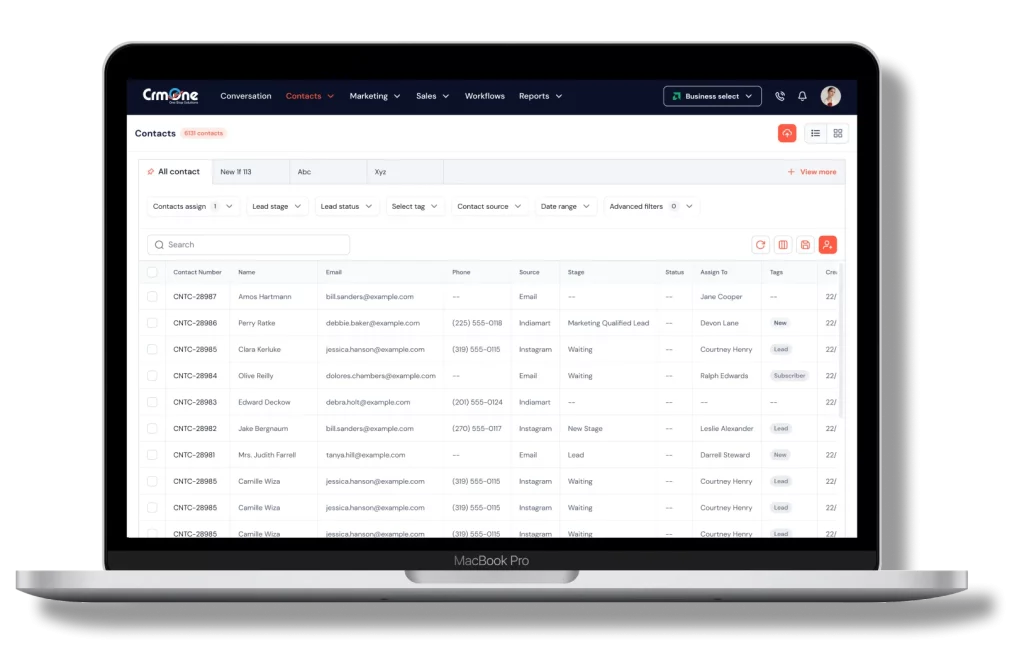
Step 6. Automate Lead Distribution
Use automation to ensure that leads are sent to the right sales representatives. This can be based on criteria like geography, industry, or lead score. Using automated lead generation tools, you can set up rules for distributing leads. This helps in managing leads more and ensures that the right salespeople get the right leads at the right time.
Integrating a lead management system with automation processes lets you capture leads. It also enables automated lead distribution. For example, you can score leads based on their behavior or demographics, and the system will assign them to the appropriate sales rep. This method speeds up and improves lead distribution accuracy. It ensures no potential customer is overlooked and boosts sales performance.
Step 7. Track and Analyze Lead Behavior
Set up tracking mechanisms to watch how leads interact with your website, email marketing, and other marketing channels. This helps you understand the behavior of website visitors and more leads you generate. By using lead automation tools, you can gather data on these interactions. This information is crucial for refining your automated lead generation strategies. It ensures they are effective.
Analyze the data from your tracking to gain insights into lead behavior. Use customer analytics to identify patterns and trends. This analysis allows you to see what is working and what needs improvement. Adjust your methods based on these insights to better engage with your leads and improve your conversion rates. Effective tracking and analysis optimize your lead automation for better performance.
Step 8. Optimize Conversion Paths
optimize your conversion paths using insights gathered from lead tracking and analysis. Refine your lead generation activities to improve guiding potential clients. This helps move them through the sales funnel. Try different messages, offers, and calls to action to see what works best with your audience. Use data from your marketing automation platform to identify which strategies are most effective. By making these adjustments, you can enhance your lead capture process and increase conversion rates.
Additionally, leverage social media platforms to test and optimize your conversion paths. Social media provides a worthwhile opportunity to reach a broader clients and engage with potential leads in real time. Study how your audience engages with your posts, ads, and links to refine your lead-generation activities. Integrate insights from social media and your marketing automation platform. This creates a seamless experience that guides leads to conversion. Ongoing optimization will maximize your lead generation efforts and improve results.
Step 9. Train Your Teams
Make sure your marketing and sales team knows how to use the automation tools and understand the processes involved. Provide thorough training to help them use automation. Training helps your teams learn how to capture and nurture quality leads. This ensures everyone works and gets the most out of the automation systems.
Good training also reduces human error. When your sales team knows how to use the tools, there are fewer mistakes, making the process smoother and more effective. This helps in handling quality leads and ensures the team works well together. Investing in training improves lead-generation efforts and boosts team confidence and skills.
Step 10. Measure Success and Iterate
Finally, measure the success of your lead automation against your goals. Track key metrics to see how well your system is converting sales leads into paying customers. Use this data to identify what is working well and where improvements are needed. Celebrate successes to motivate your team and acknowledge their hard work.
Learn from any failures by analyzing what went wrong and making necessary adjustments. Iterate on your strategies to improve performance over time. Review and refine your processes to keep your automation efforts effective. This helps convert sales leads into paying customers. This ongoing process will help your business grow and adapt to changing market conditions.
Best lead generation automation tools

1. CrmOne:
CrmOne is a comprehensive CRM and lead generation tool automation. It offers lead scoring, contact management, email marketing, and sales pipeline tracking. It provides an interface and seamless integration with other business tools.
2. HubSpot:
HubSpot is a well-liked inbound marketing and sales platform that offers a suite of tools for lead generation and management. It includes Characteristics such as email marketing, lead scoring, landing page creation.
3. Salesforce:
Salesforce is a Top CRM platform with strong lead generation and automation features. With Salesforce, you can track leads through the sales pipeline and automate tasks. You can also personalize marketing campaigns using customer data.
4. Pardot:
Pardot, part of the Salesforce ecosystem, is a B2B marketing automation platform. It specializes in lead generation and nurturing. It offers features such as lead scoring, email marketing, landing page creation, and ROI reporting.
5. ActiveCampaign:
ActiveCampaign is an all-in-one marketing automation platform that includes powerful lead generation tools. It offers features like email marketing, CRM integration, and lead scoring. Behavior-based automation helps businesses attract and convert leads.
These tools provide a range of features to streamline your lead generation process and refine conversion rates. Choose the one that best fits your business needs and budget.
Conclusion
Lead automation improves your business’s efficiency, productivity, and profitability. By following this guide, you can use automation to streamline lead management, boost conversion tracking, and grow. CrmOne helps your team to achieve success in the fast-changing world of sales and marketing.
Lead automation is essential for businesses today. It helps them thrive in the fast-paced digital world. By following this guide, you can become more efficient, productive, and profitable. Embrace automation, empower your teams, and maximize your lead management efforts.
Get started for Free
Start for free today. Boost your sales by clicking the Get Started button. With CrmOne, you can manage leads, sales, and customer service all in one place.
